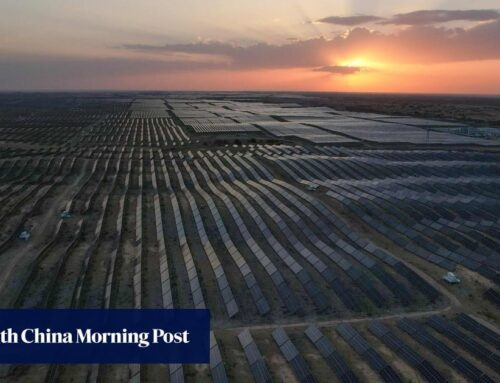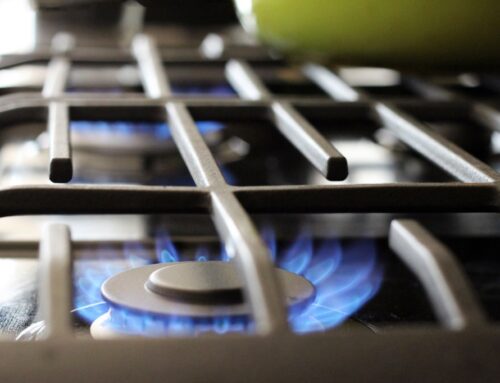Why Europe is pivoting back to nuclear — one of its most divisive energy sources
May 27, 2025
A European-wide shift to nuclear power appears to be gathering momentum as countries hedge their bets in pursuit of more energy independence.
In just the last few weeks, Denmark announced plans to reconsider a 40-year ban on nuclear power as part of a major policy shift, Spain reportedly signaled an openness to review a shutdown of its nuclear plants and Germany dropped its long-held opposition to atomic power.
The renewed European interest in nuclear shows how some countries are hedging their bets in pursuit of more energy independence.
The burgeoning trend appears to be driven, at least in part, by some of the costs associated with renewables, notably solar and wind technologies.
“Solar and wind are still the cheapest and fastest way to drive the green transition, and that remains our focus. But we also need to understand whether new nuclear technologies can play a supporting role,” Lars Aagaard, Denmark’s minister for climate, energy and utilities, told CNBC via email.
The renewables-heavy Scandinavian country said in mid-May that it plans to analyze the potential benefits and risks of new advanced nuclear technologies, such as small modular reactors, to complement solar and wind technologies.
Denmark’s government, which banned the use of atomic energy in 1985, added that it does not plan a return to traditional nuclear power plants.
“We have no recent experience with nuclear power, and we lack the necessary knowledge regarding safety and waste management. That’s why we must begin a serious analysis — not to replace solar and wind, but to see whether new nuclear can complement our energy system in the future,” Aagaard said.
Georg Zachmann, senior fellow at Bruegel, a Brussels-based think tank, said nuclear power remains the most divisive electricity generation technology in Europe.
“Thereby, the renaissance of nuclear in the political discourse is somewhat surprising, given that the cost of main competing technologies, new wind and solar plants, have dropped by more than 80 percent, while those of nuclear plants have rather increased,” Zachmann said.
The so-called “hidden cost” of balancing and transporting electricity from renewables has been increasing with rising shares of wind and solar generation, Zachmann said, noting that this theme has recently become more apparent.
Revived European interest in nuclear
Spain signaled its openness to atomic energy late last month. In an interview reported by Bloomberg, Spanish Environmental Transition Minister Sara Aagesen said that while the government is proceeding with plans to retire nuclear energy reactors over the next decade, extensions beyond 2035 could not be ruled out.
Aagsen said at the time that the government was not considering anything, and no specific proposals had yet been tabled.
Widely regarded as anti-nuclear power, the southern European country has been mired in a blackout blame game over green energy in recent weeks. It follows a catastrophic power outage affecting much of Spain, Portugal and the south of France.
The discussion whether to prefer nuclear or renewables only helps natural gas — that continues to be burnt as long as investments in clean electricity do not happen at scale.Georg ZachmannSenior fellow at Bruegel
Some external observers have flagged renewables and net-zero emissions targets as possible reasons for the outage, particularly given Spain and Portugal both rely on high levels of wind and solar for their electricity grid.
Spanish Prime Minister Pedro Sanchez and the country’s grid operator Red Electrica de Espana (REE), however, have both said record levels of renewable energy were not at fault for the blackout.
Germany, which closed the last of its three remaining nuclear plants in 2023, recently scrapped its opposition to nuclear power in what marked a rapprochement with France.
Led by Chancellor Friedrich Merz, the newly elected government was said to have dropped its objection to French efforts to ensure that nuclear power is treated on a par with renewables in EU legislation, the Financial Times reported on May 19, citing French and German officials.
Spokespeople for France and Germany’s respective governments were not immediately available to comment when contacted by CNBC.
Natural gas
As it is low-carbon, advocates argue that nuclear power has the potential to play a significant role in helping countries generate electricity while slashing emissions and reducing their reliance on fossil fuels.
Some environmental groups, however, say the nuclear industry is an expensive and harmful distraction to cheaper and cleaner alternatives.
Read more
Bruegel’s Zachmann said the ability of fully depreciated nuclear power plants to continue operating much beyond their lifetime, as well as the “highly uncertain” hope that next-generation small modular reactors “can be built very cheaply captures the imagination of industry and policymakers.”
In all likelihood, Zachmann said “new nuclear power plants will remain difficult to finance and will at very best only pay off in decades. In the meantime, the discussion whether to prefer nuclear or renewables only helps natural gas — that continues to be burnt as long as investments in clean electricity do not happen at scale.”
Data published by energy think tank Ember found that the EU’s electricity system continued a rapid shift toward renewables in the first half of last year. Indeed, wind and solar power rose to record highs over the six-month period, reaching a share of 30% of the bloc’s electricity generation and overtaking fossil fuels for the first time.
Alongside renewables growth, Ember said at the time that nuclear generation across the EU increased by 3.1%.
Search
RECENT PRESS RELEASES
Related Post




